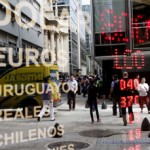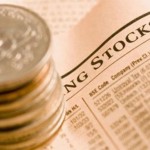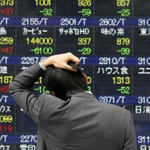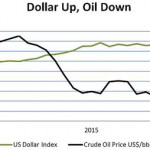Dollar heads for third weekly gain on economic outlook

The dollar headed for a third weekly gain versus the euro, the longest stretch in two months, as signs of a sustained U.S. recovery boost speculation the Federal Reserve is moving toward raising interest rates.
The Bloomberg Dollar Spot Index approached the strongest since March as economists said data today will show U.S. employers boosted jobs and the Fed’s preferred gauge of inflation was near the most since 2012. The dollar rose for an 11th day versus the yen, the longest stretch since 2001. Australia’s dollar headed for a weekly loss as a private report showed Chinese manufacturing grew less than earlier estimated. Most Asian currencies fell including the South Korean won.
“We’ve had data confirming that the U.S. economy is a bit stronger than what everyone previously thought, and the Fed is slowly, slowly moving toward normalizing policy,” said Janu Chan, an economist at St. George Bank Ltd. in Sydney. “The trend is for the dollar to move higher.”
The dollar was little changed at $1.3386 per euro at 6:42 a.m. in London, up 0.3 percent over five trading days and set for its first three-week gain since the period ended May 23. The U.S. currency rose 0.1 percent to 102.94 yen, extending this week’s gain to 1 percent. The euro added 0.1 percent to 137.79 yen.
The Bloomberg Dollar Spot Index, which tracks the U.S. currency against 10 major counterparts, was at 1,022.63 from 1,021.93 yesterday. It has jumped 0.8 percent this week.
Payrolls Increase
U.S. employers added 230,000 workers in July and the jobless rate stayed at an almost six-year low of 6.1 percent, according to Bloomberg surveys before today’s Labor Department data. The personal consumption expenditure deflator, an inflation measure preferred by the Fed, rose an annual 1.7 percent in June after climbing 1.8 percent in May, which was the biggest gain since 2012, a separate survey showed.
The premium on options to buy the dollar against the yen over those giving the right to sell rose to an eight-month high yesterday. The 25-delta one-month risk reversal rate climbed as high as 0.17 percentage point, the most since November.
The dollar strengthened 2.4 percent in the past month, the best performer of 10 developed-nation currencies tracked by Bloomberg Correlation-Weighted Indexes. The yen gained 0.8 percent, while the euro weakened 0.1 percent.
Australia’s dollar headed for its biggest weekly loss since May after a Chinese Purchasing Managers’ Index for manufacturing from HSBC Holdings Plc and Markit Economics showed a final reading of 51.7 in July, less than its preliminary figure of 52.
Brief Spike
The Aussie rose briefly after an official report on manufacturing in the world’s second-biggest economy showed last month’s expansion was the fastest in more than two years.
“Perhaps being U.S. payrolls day, where no one wants to be short USD, the AUD only briefly spiked” after the official Chinese data, said Annette Beacher, the Singapore-based head of Asia-Pacific research at TD Securities Inc. “Clearly, ‘sell on rallies’ remains live,” Beacher wrote in an e-mailed note to clients today.
The Aussie was little changed at 92.91 U.S. cents after rising as much as 0.2 percent. It has slumped 1.1 percent this week.
Most Asian currencies fell against the dollar as investors preferred to hold the U.S. currency.
The Philippine peso slid 0.5 percent to 43.69 per dollar, the won dropped 0.8 percent to 1,036.39 and Malaysia’s ringgit weakened 0.6 percent to 3.2133.
Source: Bloomberg





























